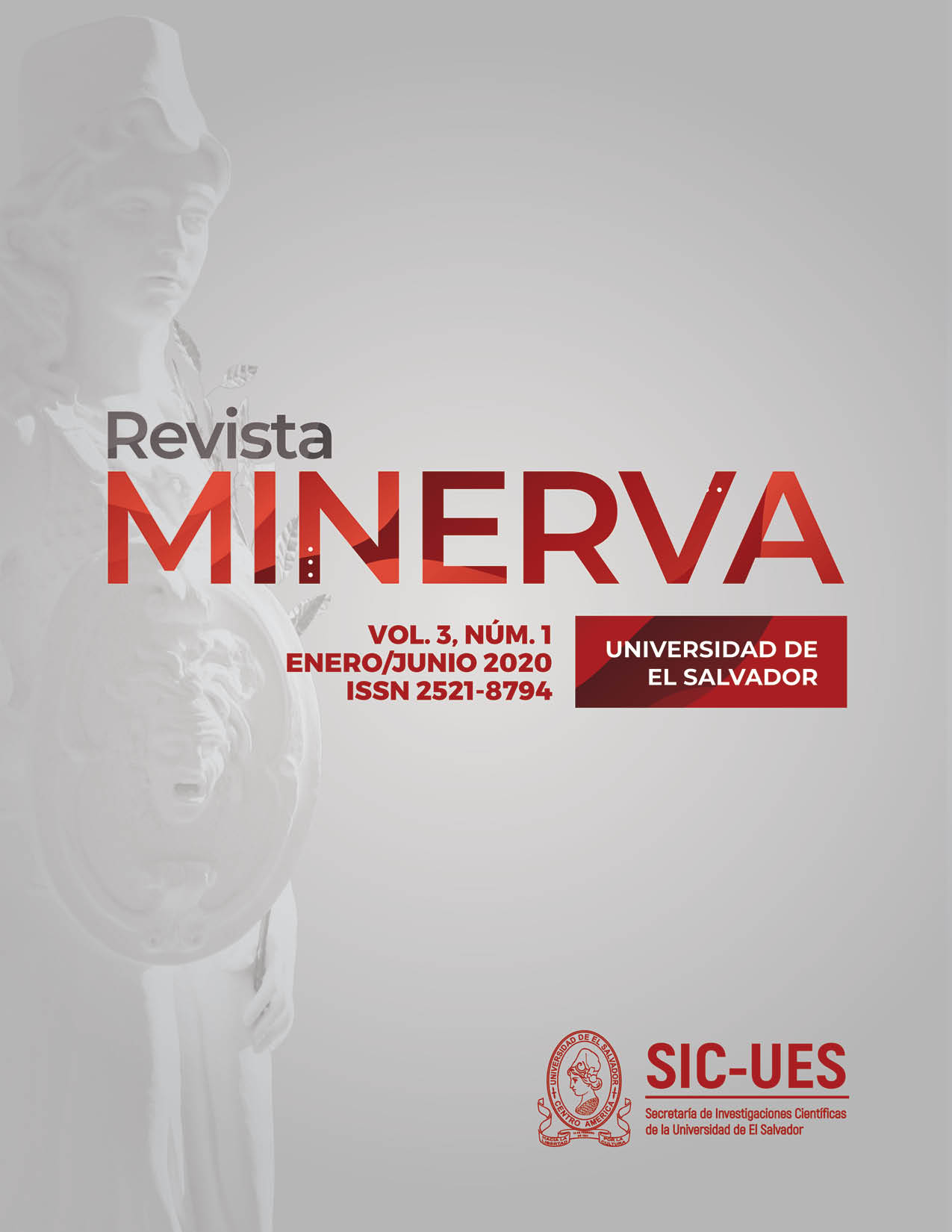Incorporación de bacterias ácido lácticas nativas como probióticos en el cultivo de camarón blanco Litopenaeus vannamei (Boone 1931) en la camaronera Las Ánimas, El Salvador
DOI:
https://doi.org/10.5377/revminerva.v3i1.12473Palabras clave:
camarón blanco, Bacterias Ácido Lácticas, Probiótico, Biorremediador, Bacterias nativas, Lactobacillus paracasei, Lactococcus lactisResumen
La investigación se realizó en la camaronera “Las Ánimas”, ubicada en cantón Ánimas Abajo, Zacatecoluca, La Paz, El Salvador, durante agosto 2016 a septiembre 2017. El objetivo principal fue la búsqueda de alternativas que generen una reducción de costos en la producción de camarón, así como el mejoramiento de las condiciones del medio ambiente en la zona del estudio de manera eficiente. Se realizó en dos fases, la primera consistió en trabajo de laboratorio, comenzó con la recolección de muestras de camarones de cuatro estanques de dicha granja, con el propósito de aislar cepas nativas de Lactobacillus. se obtuvieron 40 cepas, de las que se seleccionaron cuatro para realizarles, pruebas de factibilidad probiótica, al final dos cepas que cumplieron todos los requisitos como probióticos, estas son las bacterias ácido lácticas Lactobacillus paracasei (E91) y Lactococcus lactis (E33). La segunda fase implicó trabajo de campo, donde se evaluó el probioótico a base de las bacterias acido lácticas nativas aisladas contra un probioótico comercial EPICIN® G2. Se configuraron cuatro tratamientos de los cuales dos contenían las bacterias nativas más el biorremediador EPICIN® PST y dos con el probioótico comercial más el EPICIN® PST. Los resultados de los tratamientos conformados por bacterias ácido lácticas más EPICIN® PST, presentaron un menor deterioro de los parámetros del agua. Aunque las aguas se clasificaron como pobres, según el ICA (Índice de Calidad del Agua), los probióticos nativos presentaron poca variabilidad entre sus constantes; este dato fue concordante con el análisis del Índice de Estado Trófico (TRIX por sus siglas en ingles), que clasifica las aguas del estero como Hipertróficas. En los parámetros productivos los tratamientos con bacterias ácido lácticas generaron mayor eficiencia, ya que la sobrevivencia para los tratamientos T3 y T4 fue de 47.56% y 45.68%, superando a los tratamientos control T1 y T2 con 44.57% y 38.97%, al igual que en la sobrevivencia de los estanques con bacterias nativas, se tuvo mayor eficiencia en cuanto al rendimiento en la producción, ya que los T3 y T4 presentaron un rendimiento de 6,806.36 kg y 5,414.55 kg, mientras que T1 y T2 registraron un rendimiento de 5,544.09 kg y 5,387.27 kg. Al mismo tiempo se realizó un análisis de beneficio-costo el cual demostró que utilizar bacterias ácido lácticas como probióticos, produce una reducción en costos operativos, ya que los T3 y T4 producen un egreso de USD$62,614.63 y USD$55,481.78 contra los egresos de los T1 y T2 que fueron de USD$94,105.33 y USD$74,456.95; indicando que para los T3 y T4 se realizó un retorno de USD$1.39 y USD$1.25 por cada dólar invertido, mientras que los T1 y T2 dejaron un retorno de USD$1.10 y USD$1.15 por cada dólar invertido. Con lo anterior, se concluye que Lactococcus lactis y Lactobacillus paracasei aisladas del tubo digestivo de los camarones cultivados en la granja, están dentro de la lista de bacterias que se pueden utilizar como probióticos en el cultivo de camarones en estanques y se recomienda la presente metodología para mejorar la producción de granjas camaroneras en armonía con el medio ambiente.
265
Descargas
Publicado
Cómo citar
Número
Sección
Licencia

Esta obra está bajo una licencia internacional Creative Commons Atribución-NoComercial-SinDerivadas 4.0.

